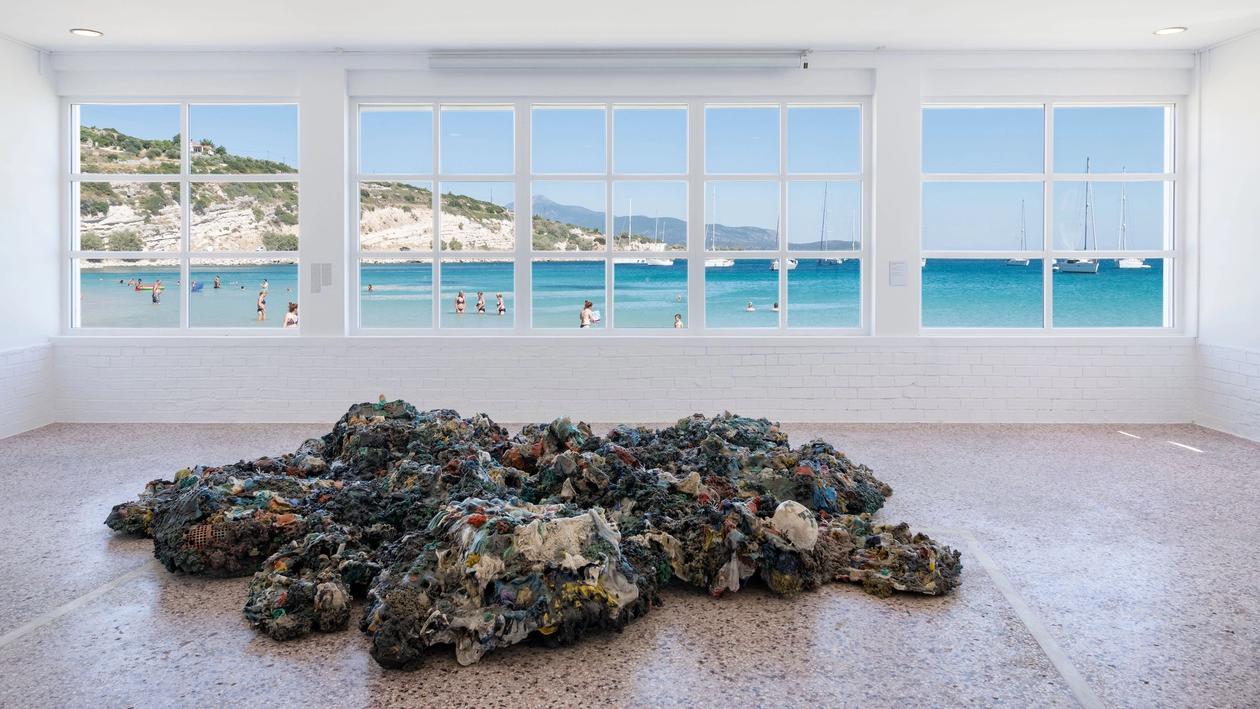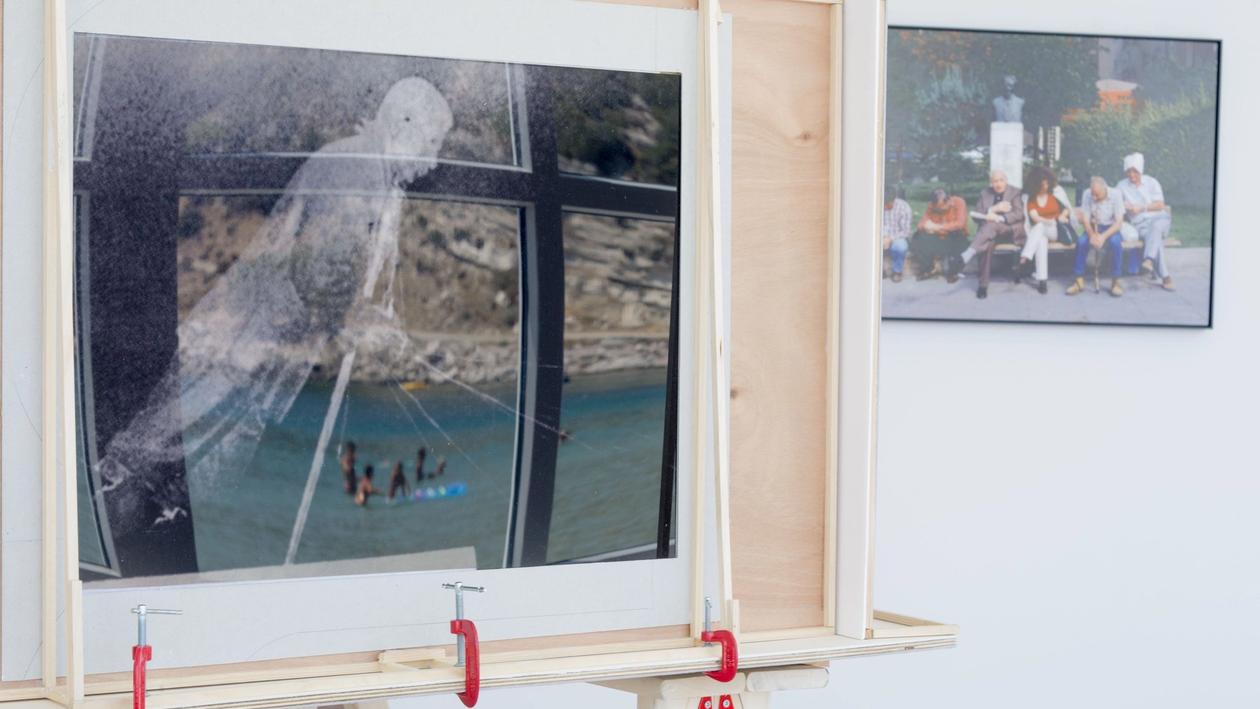
Summer of Love


Participation Artists
Curator
1967/2017: THEN/NOW
Text by Katerina Gregos
Summer of Love, the 2017 exhibition at Art Space Pythagorion, borrows its title from the sociocultural phenomenon that took place fifty years ago in the summer of 1967.2 While in Europe the year 1968 might have more of a legendary status due to the student uprisings in Paris and the Prague Spring, 1967 was in many ways a more significant year in terms of geopolitical, cultural and intellectual developments. It was the year of the Six-Day War, which irrevocably changed the landscape of the Middle East; the effects of this are still being felt today. In Greece, it was the year that marked the beginning of the seven-year military dictatorship. Ironically, it was also the year that the U.K. applied for EEC membership. In the U.S. and all over the world, 1967 also saw the first major political protests by young people against the war in Vietnam. At the same time, the outburst of new popular and subcultural music was one of the defining features of the ‘Summer of Love’.1
It was also a year of significant intellectual production. Critical theorist Guy Debord published his Society of the Spectacle, while the Belgian philosopher and key Situationist International member Raoul Vaneigem — who features in this exhibition – published The Revolution of Everyday Life. While Debord’s Society of the Spectacle was concerned with how the mechanisms of capital
and consumption generate alienation, Vaneigem’s book proposed the possibility of revolutionary changes in everyday life. He imagined a new society that “promotes the participation of everyone in the self-realisation of everyone else,” based on “creativity, love and play.”3 In today’s regressive climate of fear and xenophobia, Vaneigem’s thesis seems ever more pertinent.
The exhibition Summer of Love reflects on this seminal year on its fiftieth anniversary, drawing attention to an era when both the concept of politics and love possessed a real sense of urgency. The “Summer of Love” was one of the many expressions of the counterculture of the 1960s and early 1970s. It was an era of civil disobedience, of antiauthoritarianism, of political protest and ‘flower power’. Political activism translated into socio cultural activism, alternative lifestyles (sexual freedom, communes, shared property). Many young people at the time had grown up in modest post-war circumstances and didn’t care much about money, property or financial success. Young people were politicised. There was hope for a new and different world, filled with love and mutual under standing, which in retrospect might appear idealistic and naive. Yet, there is perhaps something to be learned if we reflect on this period and compare it to the staunchly individualistic, cutthroat, competitive era of today, where we are all “atomised.” It is no coincidence that many people who have memories of this era mostly prefer the naive idealism of then to the heartless cynicism of today.
The exhibition Summer of Love will reflect on the unlikely liaison of love and politics, connecting the summer of 1967 to the world in 2017, where the idea of love in intellectual and political circles is dismissed as simplistic and sentimental. Actually, love is one of the most potent and complex forces of human life. Perhaps the most interesting recent ideas advocating a different under standing of love come from literary theorist and political philosopher Michael Hardt (b. 1960) who advocates a political idea of love.5 Hardt argues that love has to be expanded beyond the limits of the couple, the nuclear family and the psychoanalytic limits of coupling as a force that also contributes to the constitution of community.
He credits love for the "collective transformation” that one experiences in certain kinds of political action. Hardt advocates a form of love that does not originate in identification with someone or something that is the same as you/us, but a love “that functions through the play of differences, rather than the insistence on the same.” Criticising the idea of love as a “merging into one,” Hardt advocates love “as a proliferation of differences, not the destruction of differences. Not merging into unity, but a constructing of constellations among differences, among social differences.”4 As he wrote together with Antonio Negri, in the book Multitude: War and Democracy in the Age of Empire: “People today seem unable to understand love as a political concept, but a concept of love is just what we need to grasp the constituent power of the multitude. The modern concept of love is almost exclusively limited to the bourgeois couple and the claustrophobic confines of the nuclear family. Love has become a strictly private affair. We need a more generous and more unrestrained conception of love.”6
- Friday, August 4
Film Screening Shadow World (2016) by Johan Grimonprez
- Johan GrimonprezArtist
Curatorial Residency Program
The art curatorial residency program is a Schwarz Foundation initiative aiming to bring together young professionals from different fields of science and art. Participants acquire professional experience by actively working together with internationally acclaimed art curators. In the inspiring ambiance of a historic and cultural area of high geographic importance, residents work at a freshhold between West and East. Residents meet, interact and develop ideas and references to an extensive community. The residents actively participate in the curating and production of the Art Space Pythagorion exhibition under the curator’s guidance. The production of complementary side-events, such as opening activities, lectures, workshops, educational programmes for children and screenings also fall in their line of work.
- Resident Curators
- Isabel Van BosResident Curator
- Ane Agirre LoinazResident Curator
- Christina PantelatouResident Curator
- Aneta Rostkowska Resident Curator
- Denise AraouzouResident Curator
- Evgenia GiannopoulouResident Curator
- Rania MavrikiResident Curator
Educational Program
Culture education is one of the main goals of the Schwarz Foundation, since its inception. Each exhibition features a specially conceived education program. As an integral part of the exhibition Summer of Love, Art Space Pythagorion invites high school students to discover the works of the participating artists and discuss about Love in all its meanings. About love for others, for our community, for our place and its different people, for music and books, for the moments in life when something changes around us and the right to make our revolution through love. We talk about the "Flower Children" in 1967 and get to know events that changed the world as described by the artists in the exhibition. Photos, videos, posters of the time, comics, books, and records become additional occasions for discussion. They are asked to create a poster, a personal timeline with illustrations as an imprint for the time in which they grow up.
At the same time, two series of lectures are organised for their teachers and aim to initiate a discussion about the awareness of young people on issues of our time. Politics, love, unexpected interactions with different people, archives from different eras and the ways in which contemporary artists talk about these.
Curator of education
With the support of
Press
- Frieze, Jennifer Higgie, Summer of Love (EN)
- Forbes, Nadja Sayej, This Small Museum Serves As An Art Hub On Samos, The Island Of Pythagoras (EN)
- artnet news, Cathryn Drake, Island Hopping: The Best Art Shows to See in the Greek Islands This Summer (EN)
- Deutschlandfunk Kultur, Werner Bloch, Was vom "Summer of Love" 1967 geblieben ist (EN)
- Deutsche Welle, Werner Bloch, Im Spiegel der Kunst: "Summer of Love" (DE)
- Monopol, Jens Hinrichsen. Review (DE)
- TAZ - Die Tageszeitung, Annegret Erhard, Wirkmächtige Paarung (DE)
- kunstforum, Uta M. Reindl, Summer of Love (DE)
- Südwest Presse, Frank Armbruster, Herbst der Liebe (DE)
- To Vima, Marilena Astrapelou, Δεν με ενδιαφέρει να εντυπωσιάσω τους συναδέλφους μου(GR)
- EfSyn, Pari Spinou, Το καλοκαίρι της Αγάπης (GR)
- Athinorama, Despina Zeykili, Το Summer of love ξαναζεί στη Σάμο (GR)
- ελculture, Gelly Grindaki Ένα άλλο καλοκαίρι της αγάπης στο Art Space Pythagorion
- Kathimerini, Margarita Pournara, Το καλοκαίρι της αγάπης στη Σάμο (GR)
- Andro, 50 χρόνια από το καλοκαίρι της αγάπης (GR)
- Kathimerini, Dimitris Athinakis, Το καλοκαιρινό «κατεπείγον» της αγάπης (GR)
- Free Sunday, Το Καλοκαίρι της Αγάπης (GR)
Download
Credits
- Curatorial Assistant: Sarita Patnaik; Production-Installation: Yorgos Efstathoulidis (Constructivist); Audiovisual Equipment: M-SPIRIT – Kostas Perifanos; Media Relations (Germany): Kathrin Luz Communications, Cologne Media Relations (Greece): Zuma Communications, Athens
Brochure
- Editor: Katerina Gregos; Graphic Design: Daniel Schnitterbaum, Manuel Birnbacher; Production: Graphics Studio, Athens; Texts: Katerina Gregos, Sarita Patnaik; Copy-editing: Colin Perry (English), Dimitris Saltabassis (English/Greek); Translation into Greek: Dimitris Saltabassis; Proofreading: Dimitris Saltabassis
Special Thanks to
- The Fine Arts Museums of San Francisco for kindly loaning the work by Tomomi Itakura.
- The Estonian Cultural Endowment for their generous support of Marko Mäetamm and Marge Monko’s work.
- The Municipality of Samos, Municipal Harbour Fund of Samos, Port Authority of Pythagorion.


